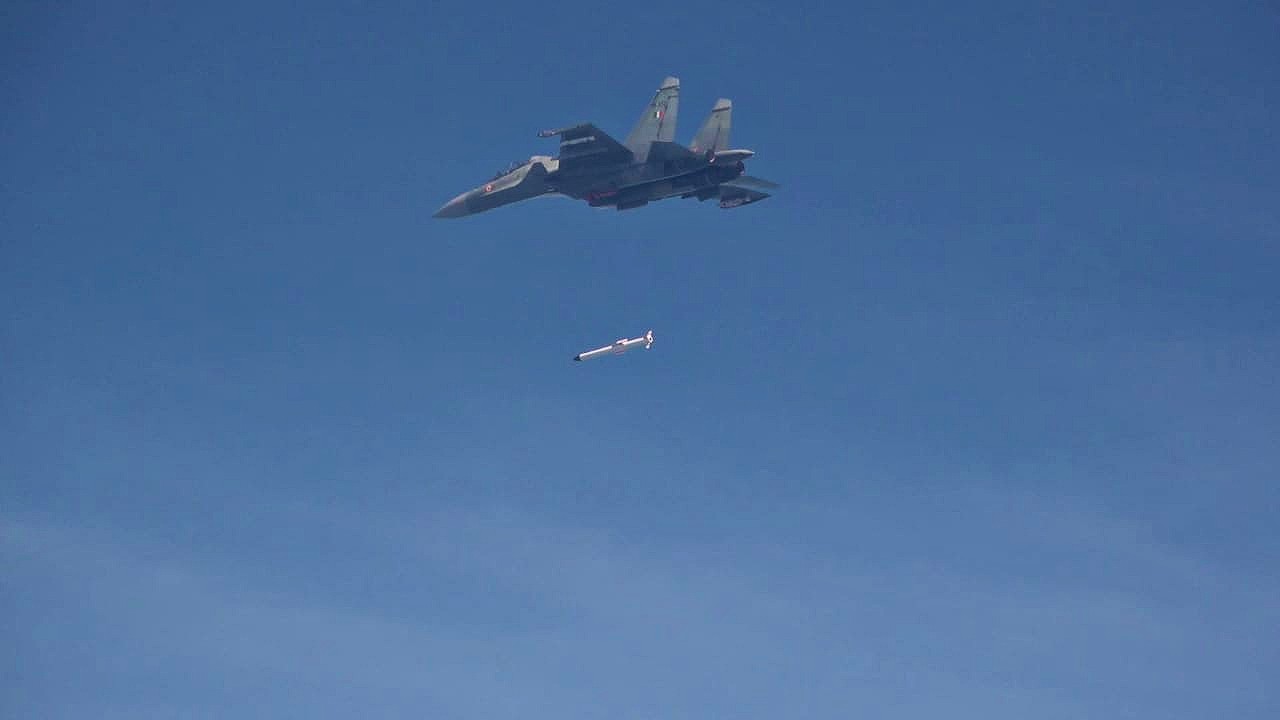The Indian Air Force seeks to acquire locally developed Rudram anti-radiation missiles, a weapon similar to the USA’s AGM-88 HARMs that are being widely used by Ukraine’s MiG-29 fighters.
The IAF has submitted a proposal worth over Rs 1,400 crore ($1.7B) to the government for purchasing Rudram’s next-generation anti-radiation missiles (NGARM) as part of a significant effort to introduce indigenously developed defense systems.
According to defense officials who spoke to news agency ANI, a proposal for the purchase of advanced anti-radiation missiles developed by the Defense Research and Development Organization is with the Defense Ministry, and a high-level meeting will shortly decide on it.
The officials also noted that the Indian Air Force has already tested the next-generation anti-radiation missiles (NGARM) from its fleet of Sukhoi-30 fighter aircraft. The missile will allow the fighter jet of the Indian Air Force to search and destroy enemy radar installations.
NGARM has high accuracy and was designed with the technology to track the radar system even when it is not in use. The elimination of radar equipment can allow the Indian Air Force to hit targets without being detected.

The tactical air-to-surface is the first anti-radiation missile that India has indigenously developed. It can travel at Mach 2, or twice the speed of sound. The anti-radiation missile is outfitted with a passive homing head that detects radiation sources of a wide range of frequencies.
It also can lock onto a target both before and after launch. The Sukhoi-30 and Mirage 2000 fighters of the IAF can fire the NGARM. The missile was first tested on October 9, 2020.
It was launched by a Sukhoi-30 fighter jet at a target on Wheeler Island off the coast of Odisha. The test illustrates an anti-radiation missile’s capacity for long stand-off distances.
Rudram-1 missile’s primary objective is to suppress enemy air defenses (SEAD). This entails taking out adversary surveillance radar installations and communication systems. The ability would enable the strike aircraft of the IAF to complete their task successfully and unhindered.
The potential purchase of the DRDO-developed Rudram Anti-Radiation Missile (ARM) by the Indian Air Force also demonstrates the significance that the SEAD/DEAD missions have come to have along India’s frontiers.

Usage Of Anti-Radiation Missile In Ukraine
Air Chief Marshal VR Chaudhari recently stated that the Indian Air Force would concentrate on introducing “made-in-India weapons” in light of the lessons learned from the Ukraine-Russian conflict.
Ukraine’s efforts to halt the Russian onslaught have significantly benefited from the military hardware hastily delivered by the US and other western nations. The American HARM missile has struck out among them for its capacity to destroy Russian radars and has grown to be a significant nuisance for the Russian forces.
The AGM-88 HARM (High-speed Anti-Radiation Missile) is a tactical air-to-surface anti-radiation missile developed to intercept electronic signals generated by enemy surface-to-air radar systems.
In early August, it was first reported that the remains of an AGM-88 HARM missile were found close to a Russian surface-to-air missile installation. The US later admitted that some anti-radar missiles were delivered to Ukraine, lending weight to Russia’s claims.
Russia can hinder the use of HARM missiles on the battlefield by shutting off its radars. But experts noted that even while users don’t get a kinetic kill, they can gain temporary local air superiority to take the necessary action.

Modern HARM variants, like the AGM-88E, can bypass the switch-off strategy if they first detect the enemy radar. In that scenario, the AGM-88E can then go to the enemy air defense system’s locations; a capability termed as “counter shutdown.”
However, Russian forces have shot down several HARMs in the ongoing war. Ukraine also employed HIMARS and HARMs in concerted attacks on the Antonovsky bridge. The goal was to destroy Russian AD radars as they tracked and engaged HIMARS rocket shells.
Despite being shot down frequently, HARMs have successfully infiltrated Russian air defenses and targeted Russian missile systems such as the Buk-M2 systems.
Russia has also fielded a similar type of missile, the Kh-31P, with a similar range as the AGM-88. According to Rosoboronexport, the missile is meant to destroy radars, air operations control radars, and early warning radars on medium and long-range surface-to-air weapons.
Meanwhile, the security assistance package announced on November 23 also includes additional High-speed Anti-radiation missiles (HARMs) for Ukrainian forces. However, the US has not revealed the exact number of missiles it will provide to Kyiv.
- Contact the author at ashishmichel(at)gmail.com
- Follow EurAsian Times on Google News




